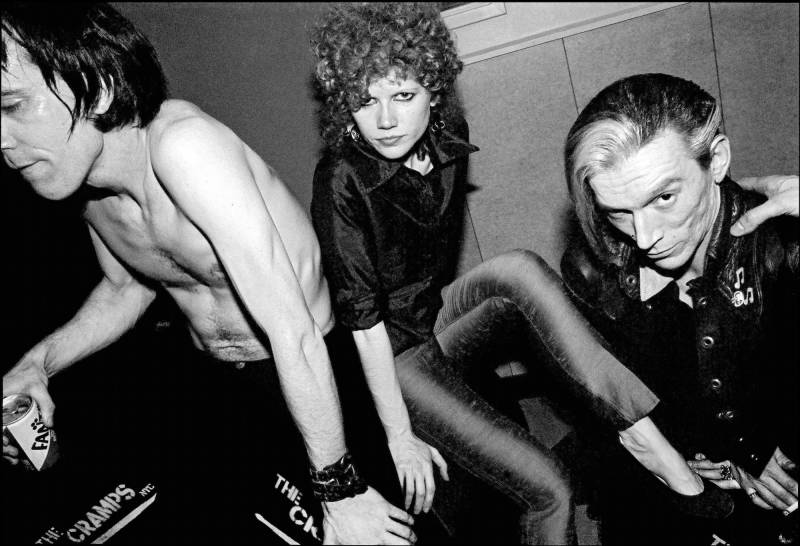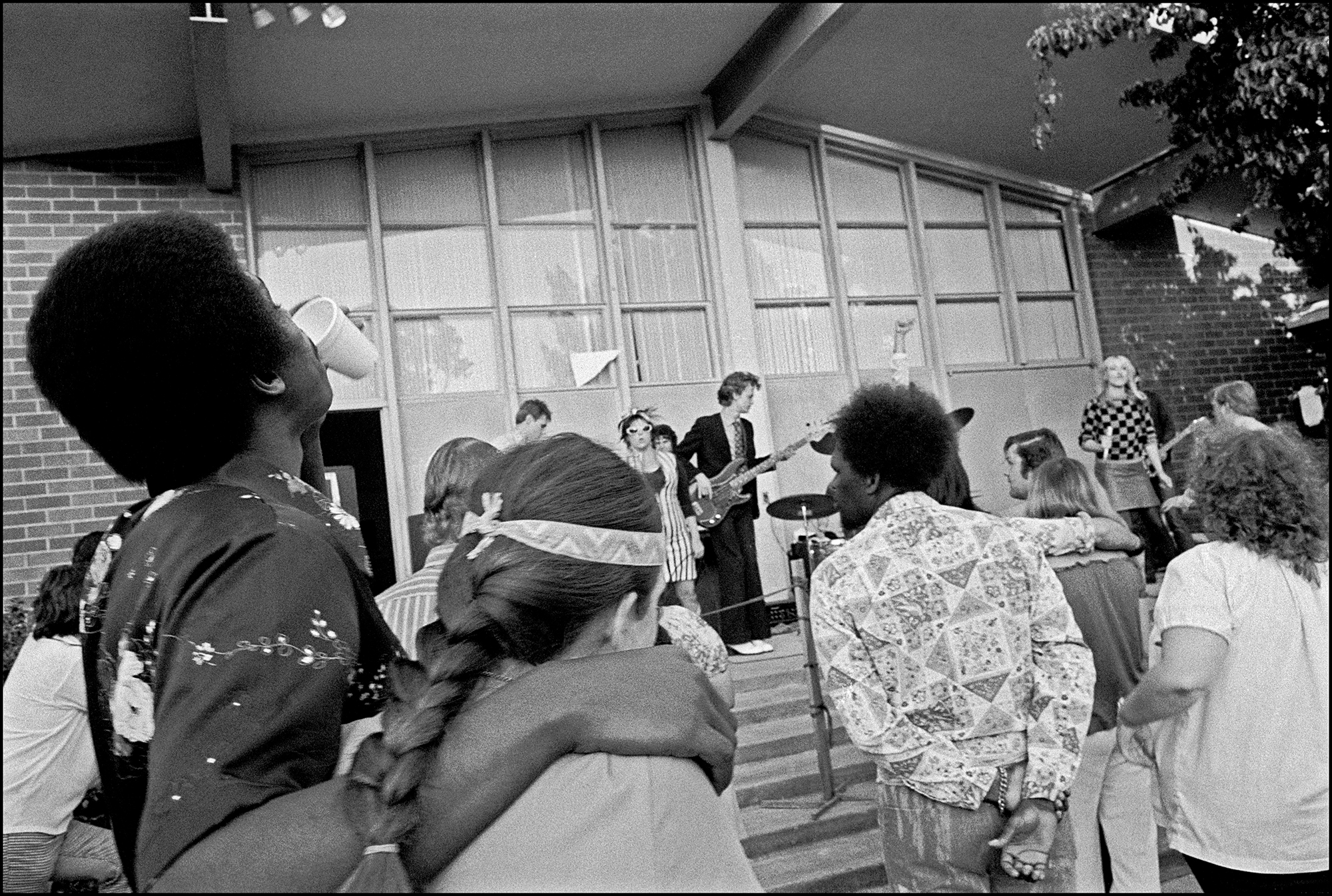She may have been intoxicated at the time, but Webster was not exaggerating. During the Cramps’ eight-song set, hospital patients jumped onstage, mimed along, danced with band members and took over the mic and screamed into it. No one seemed at all concerned that some of those patients had come from a special unit at Napa State that housed individuals considered a danger to themselves or others.
“It was a beautiful, beautiful thing,” Rees later said of the show. “I mean, you don’t know who’s who in that video. The band members and the mental patients are the same.”
“Some people told me you people are crazy,” vocalist Lux Interior stated after The Cramps’ opening song, “Mystery Plane.” “But I’m not so sure about that. You seem to be alright to me…”
As can be clearly seen in Rees’ footage above, The Cramps were a hit with the Napa State residents that day.
“They were the people that were just discarded,” the filmmaker stated in his We Were There to Be There interview, “and they were so overwhelmed by someone even caring to put on a show, and they got so into it.”
So into it, in fact, that rumors swirled afterward of several successful escape attempts by patients. “I think someone left with us, to be honest,” Webster vaguely recalled.



